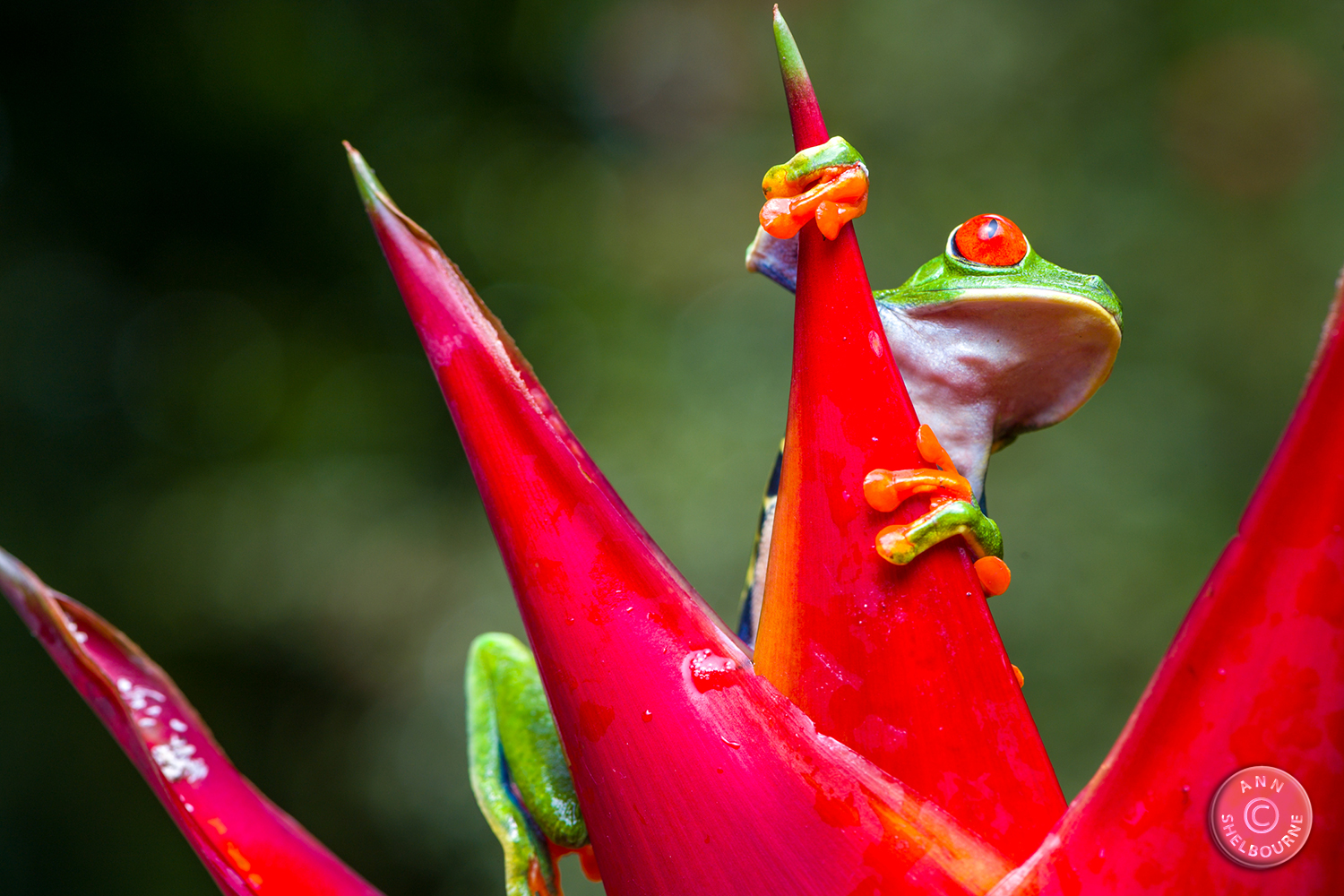Painted Frogs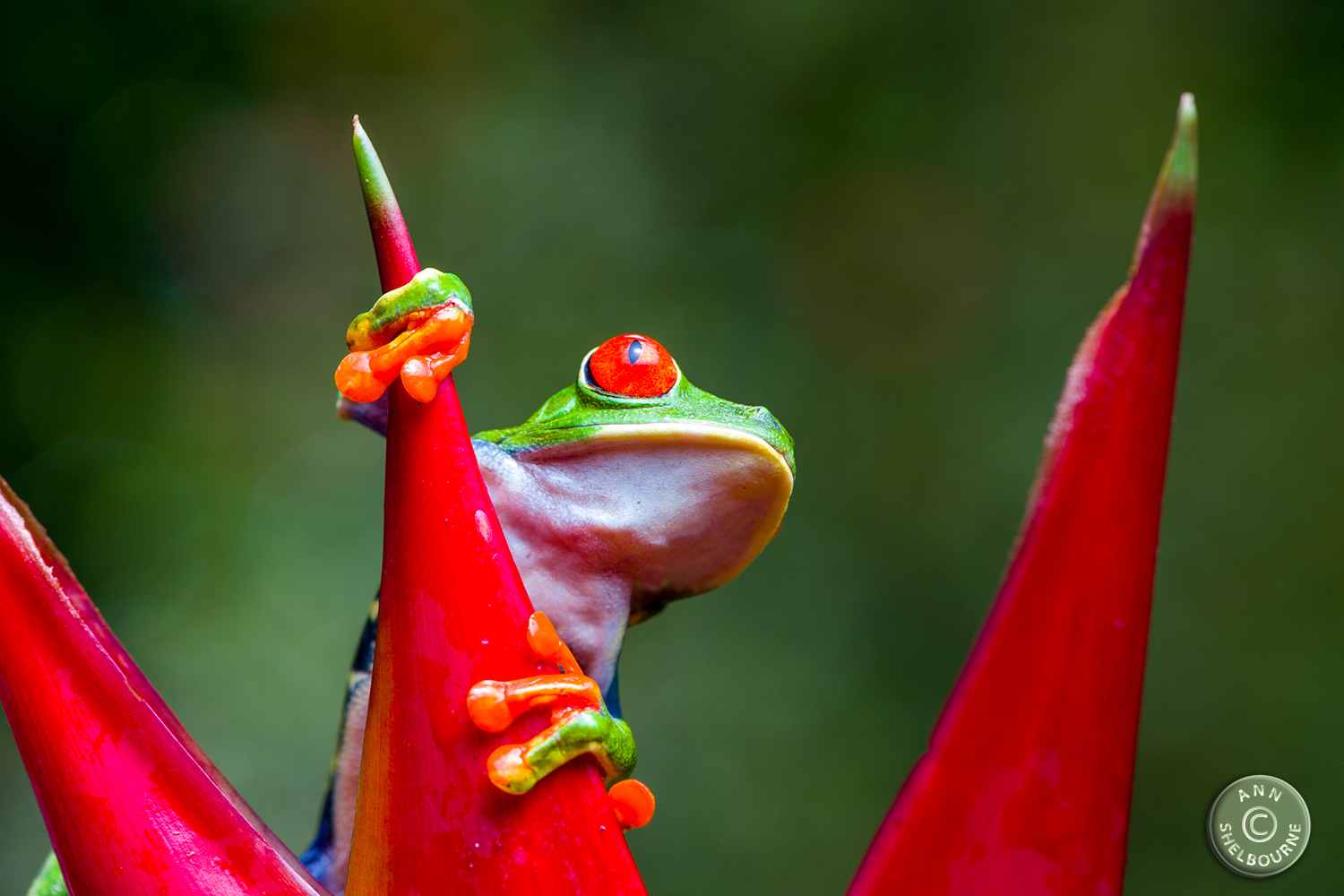
The brightly-coloured Red-eyed Tree Frog
(Agalychnis callidryas) is iconic to Costa Rica and seems to appears on every advertisement, book-cover and poster for Costa Rica.
Juan caught one of these very small (they are only about 2-inches long) tree frogs for us to photograph under controlled conditions and these are a few of my results. Juan usually likes to catch several frogs if he can (because you don't want to stress them out so its necessary to give them frequent rest-breaks in some damp moss). We only had one frog to work with that morning so we took it slowly and gave the frog plenty of time to rest.

Handsome with orange hands and feet, blue legs, striped flanks and brilliant scarlet-red eyes.
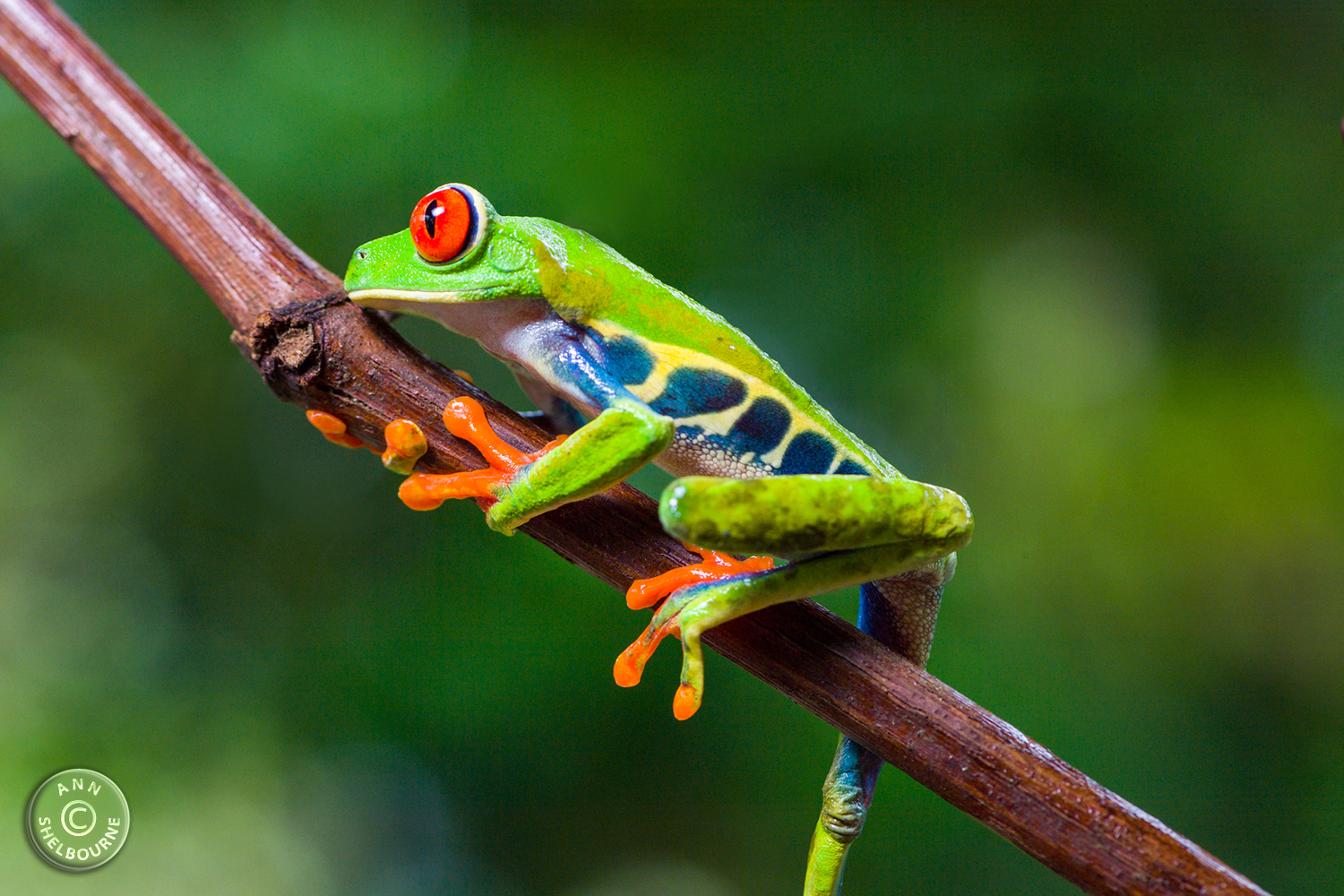
Long-legs enable an instant leap from danger:

We released her back into the wild beside a stream where she climbed this reed before leaping back into the forest:
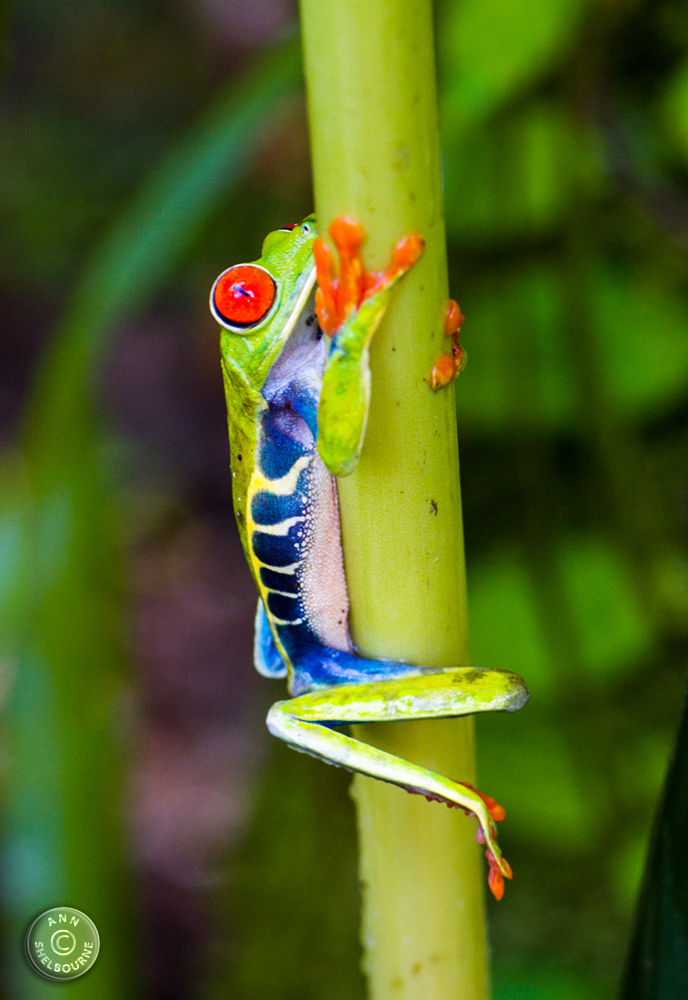
Juan and I later went on a night-time prowl in a coastal forest where we found several different frogs including this sleeping Red-eyed Tree Frog:

These frogs have a nictitating third eye-lid with a golden see-through mesh which is thought to provide them with enough vision to see advancing predators even while they are sleeping.
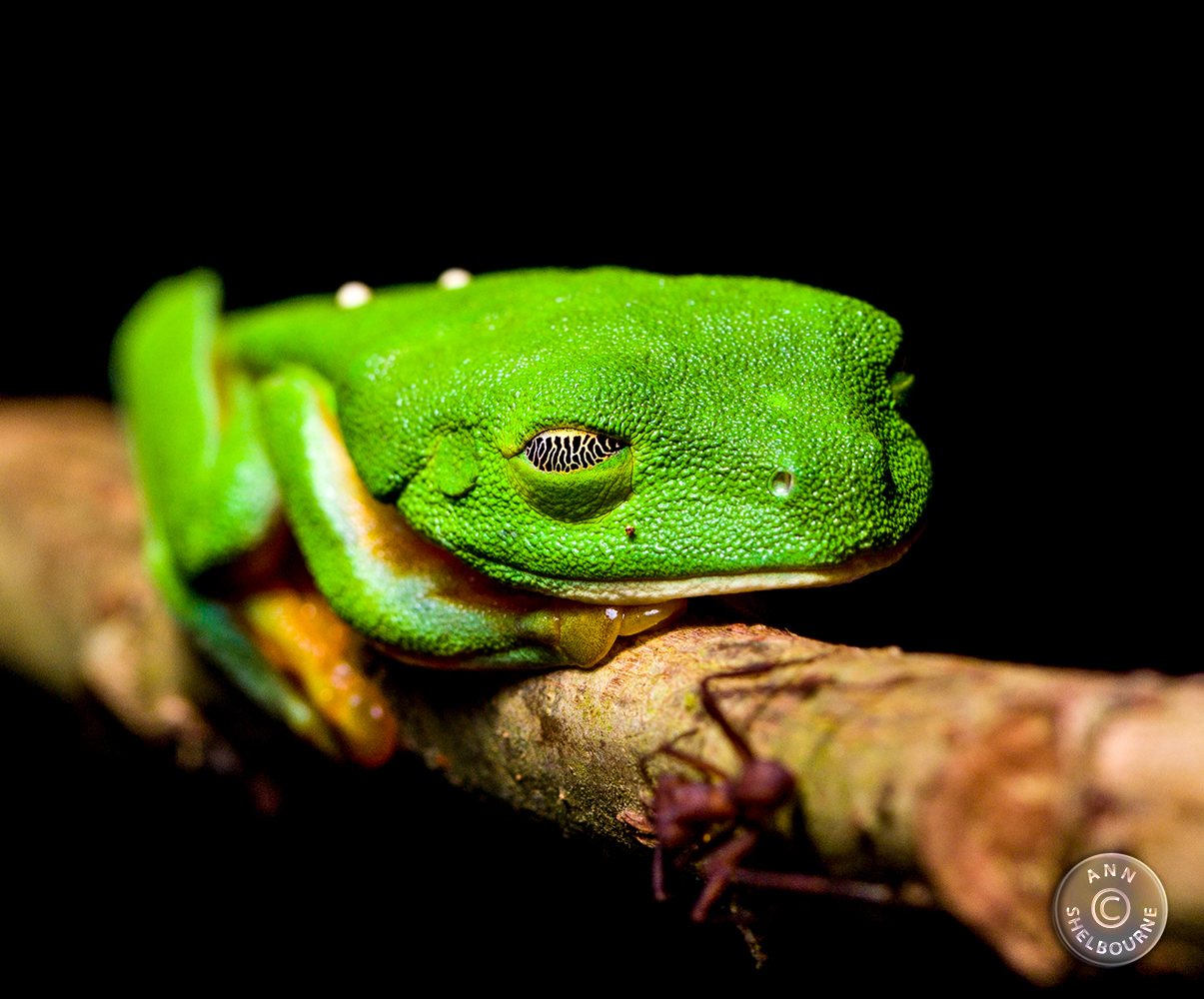
While we were staying at Laguna del Lagarto, we had the opportunity to photograph another brightly-coloured frog: the minute (they are only one-inch long!) Strawberry Poison Dart Frog (Oophaga pumilio).
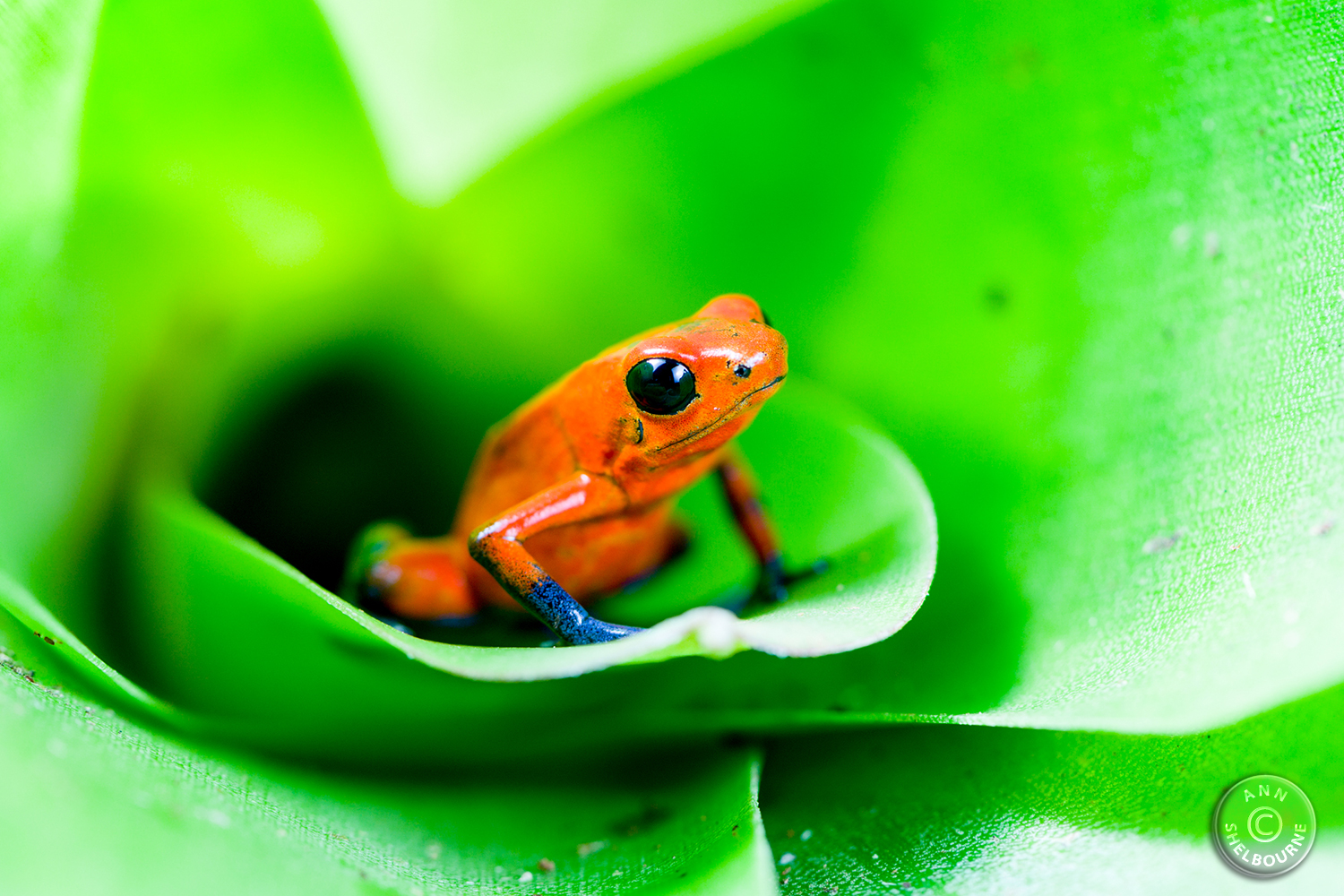
The skin of this variety is mildly toxic but the Golden Poison Dart Frog (Phylobates terribilis) from Brazil is a
very different matter.
An interesting fact is that newly hatched Strawberry Darts are not toxic: the toxicity only develops as they feast on mites and ants.

The Poison Dart Frogs got their name from the fact that a concentration made from their skin-oil was used to poison the tips of the blow-pipe darts which were used by the indigenous hunters. The poison was deadly!

During our night-time frog hunt we also found this handsome Masked Tree Frog (Smilisca baudinii):
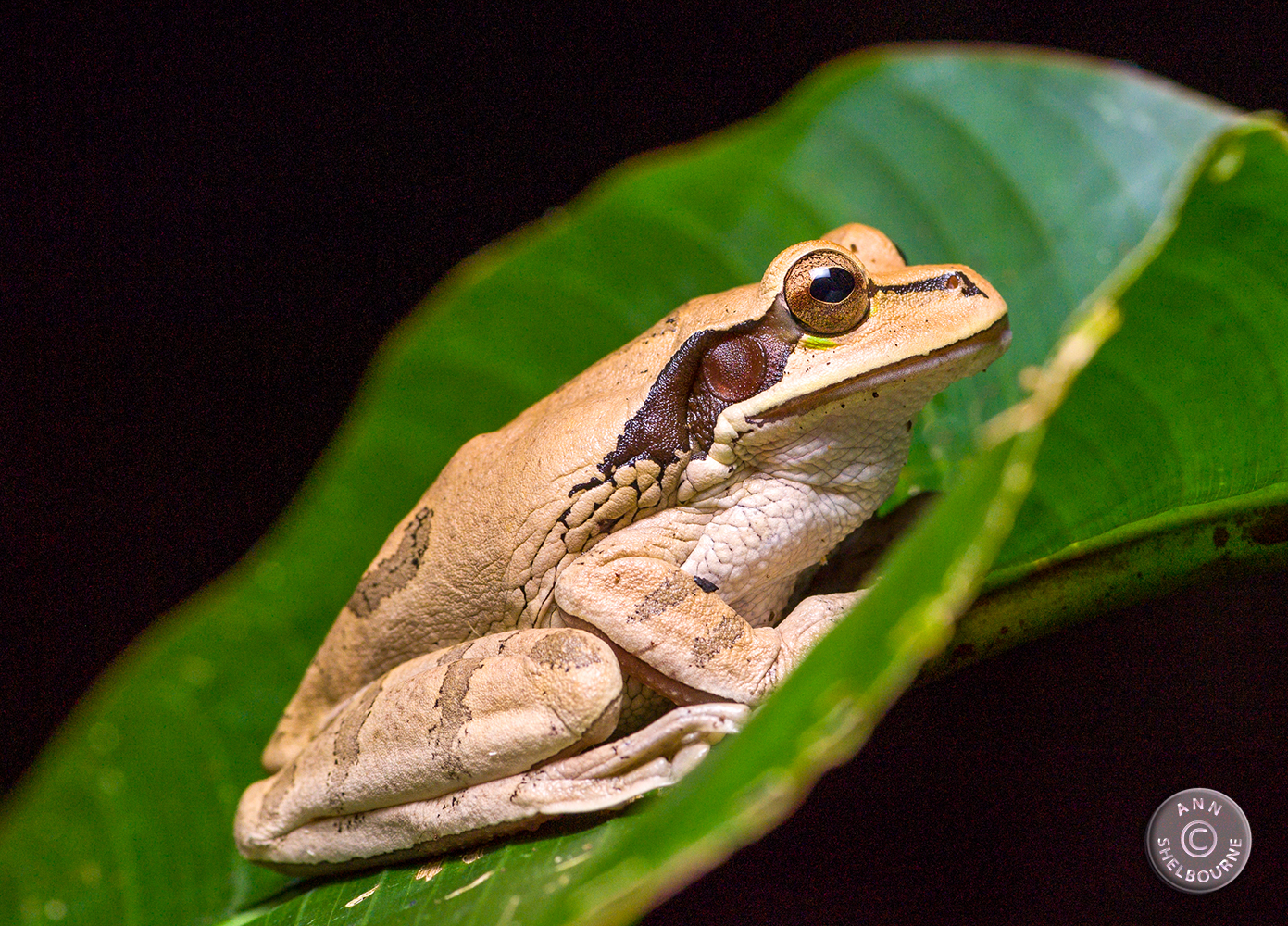
and two more species whose identities I have not yet been able to discover:
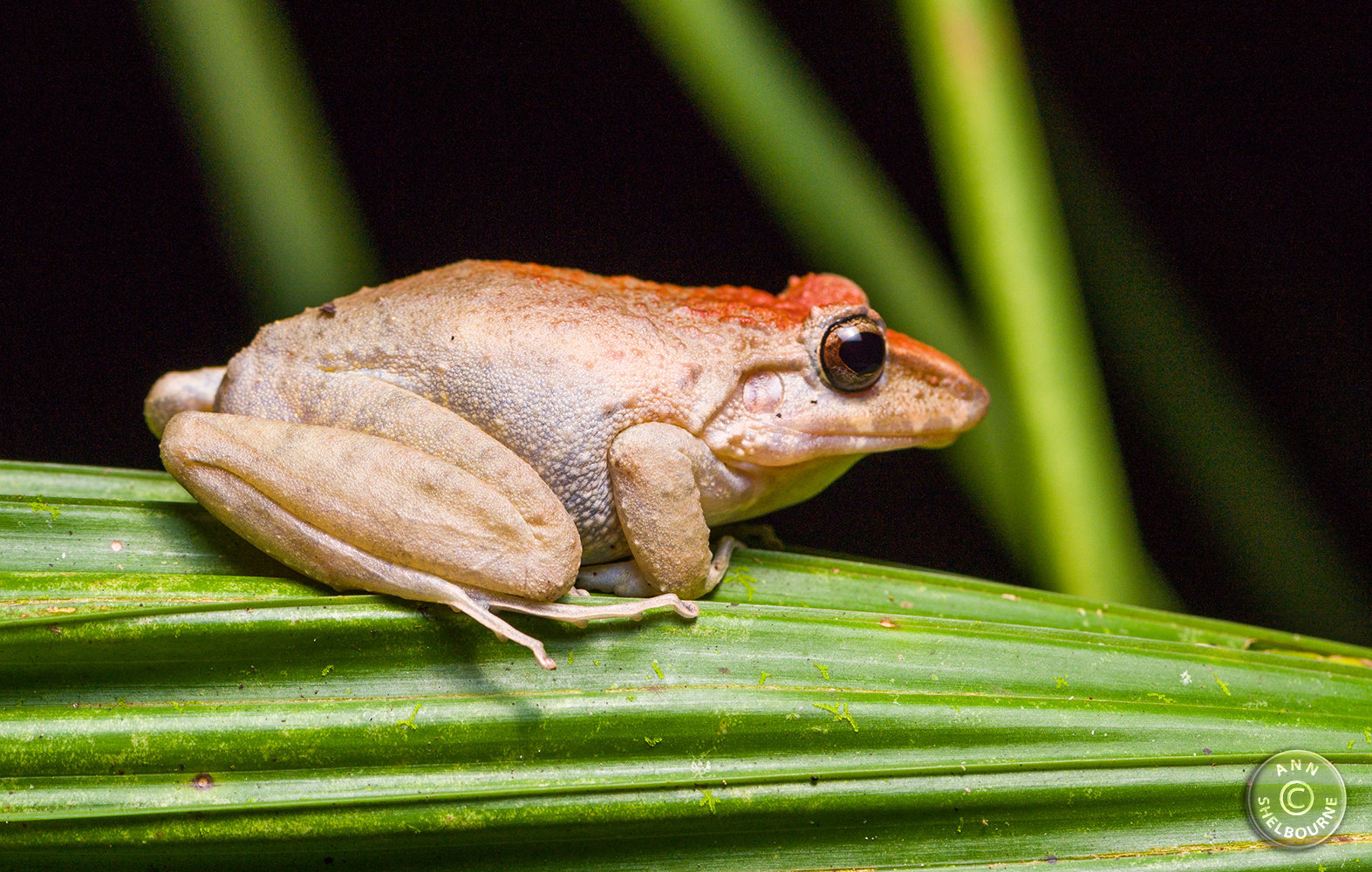
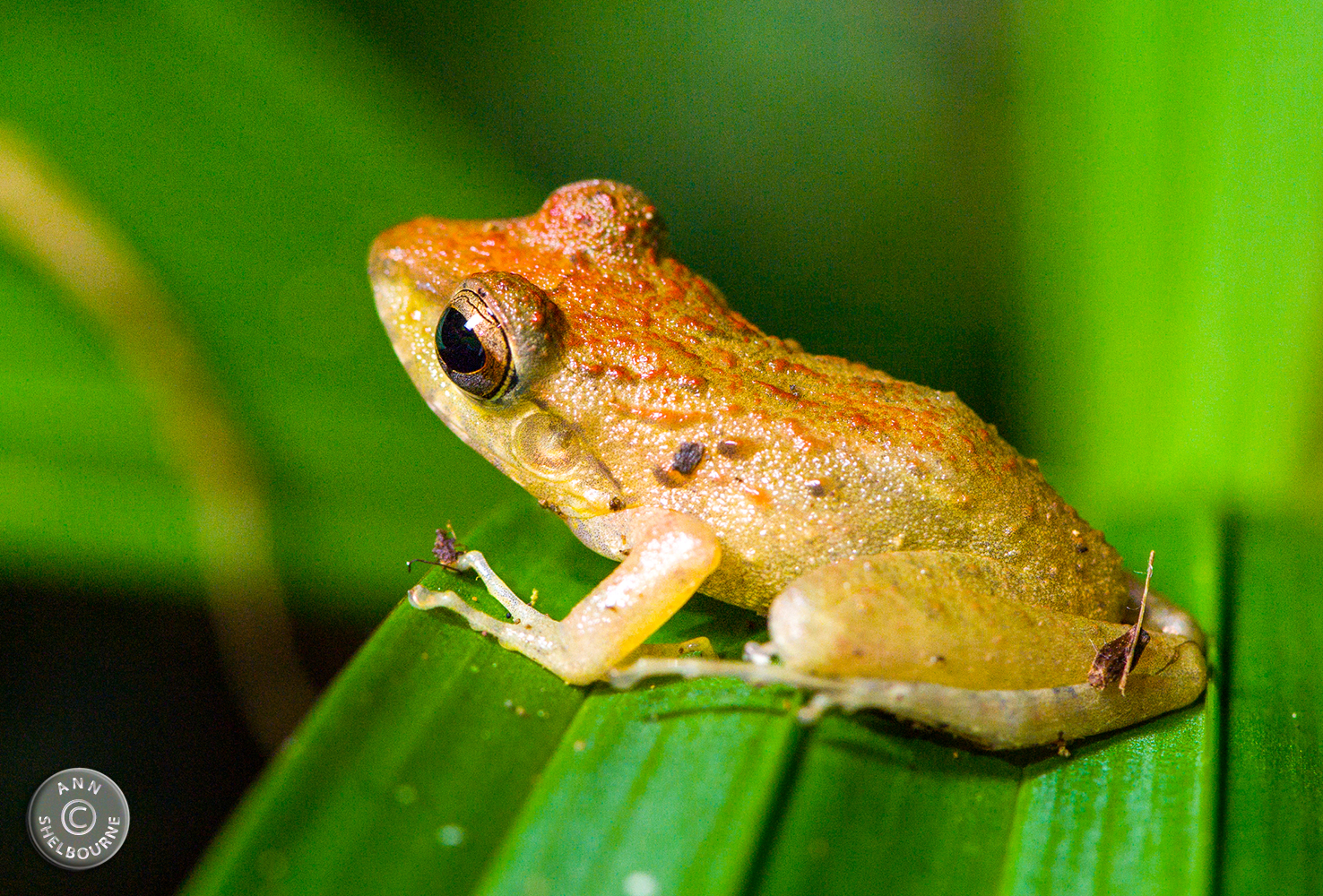
and this one which, because of his dry warty skin, I believe to be Toad:
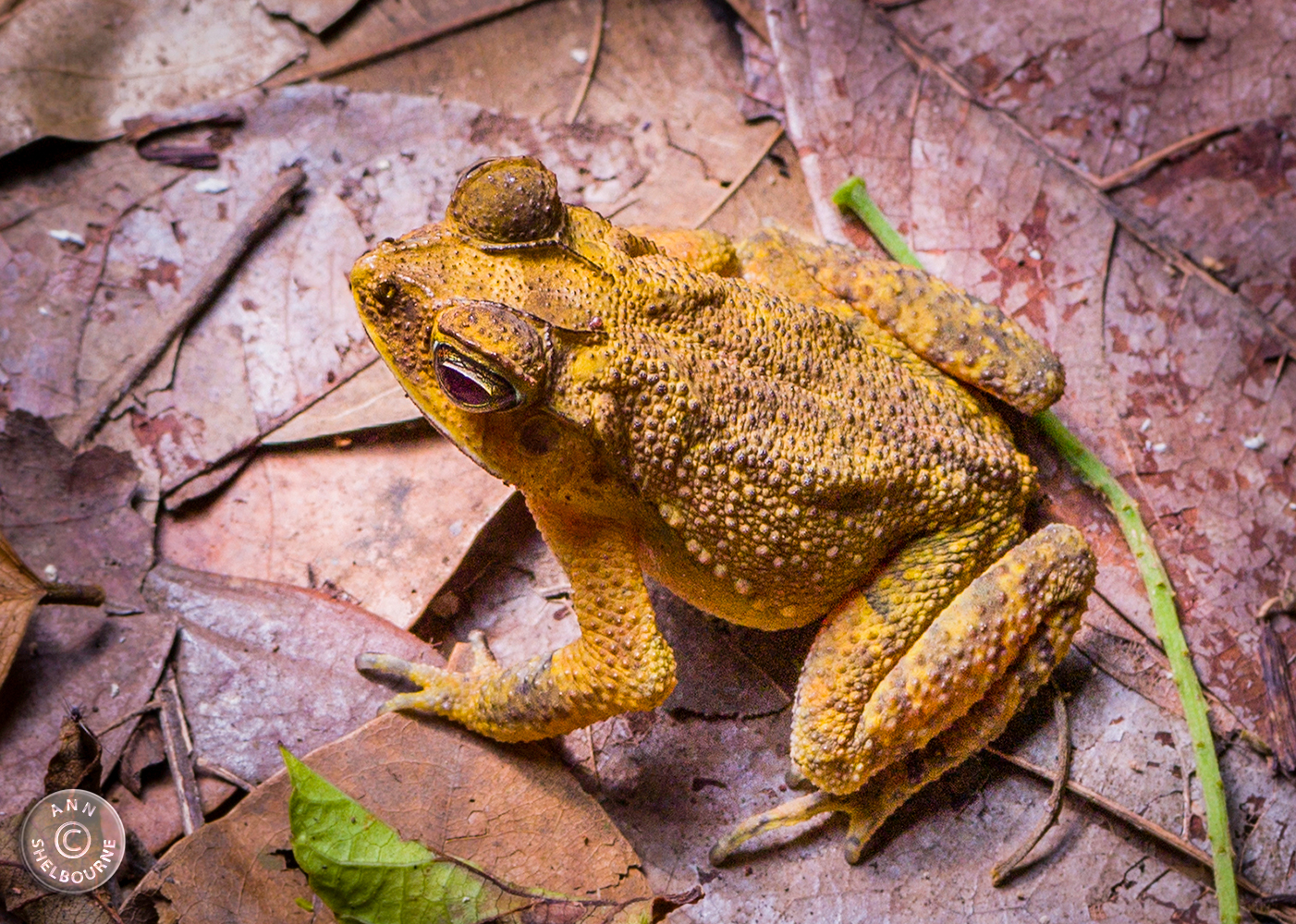
Red-eye Tree Frog perched in a Heliconia:
